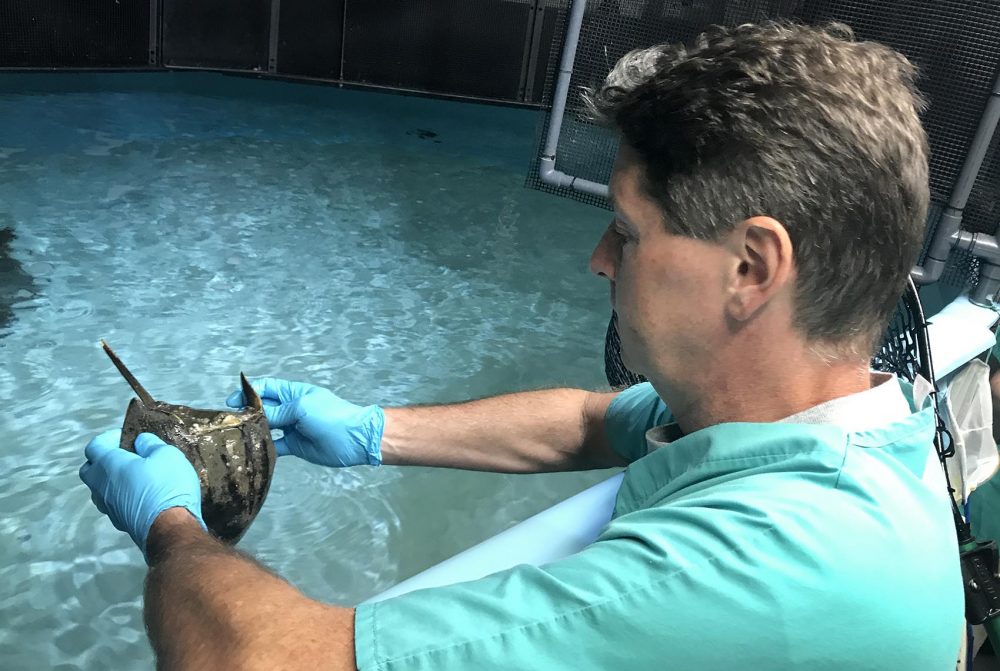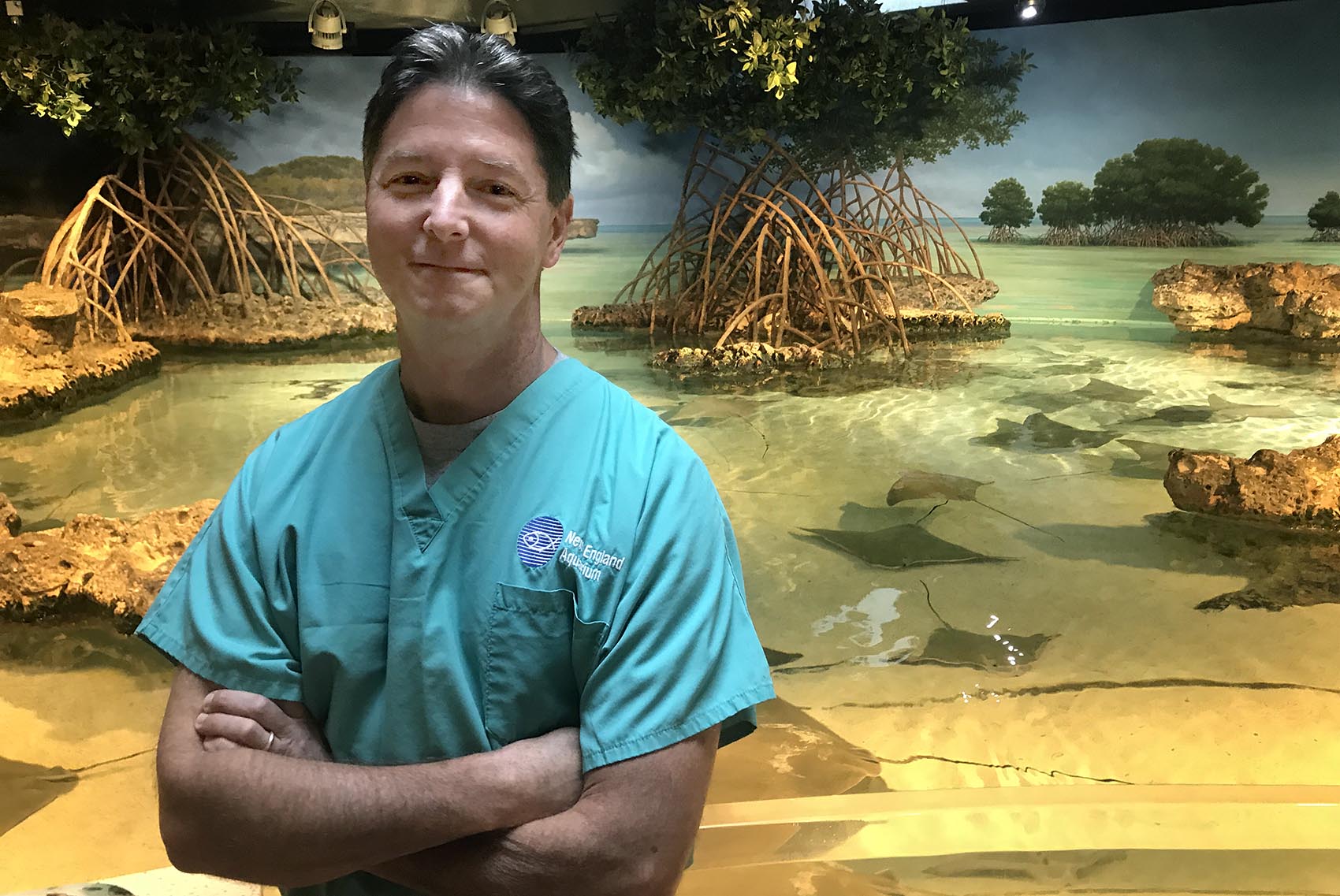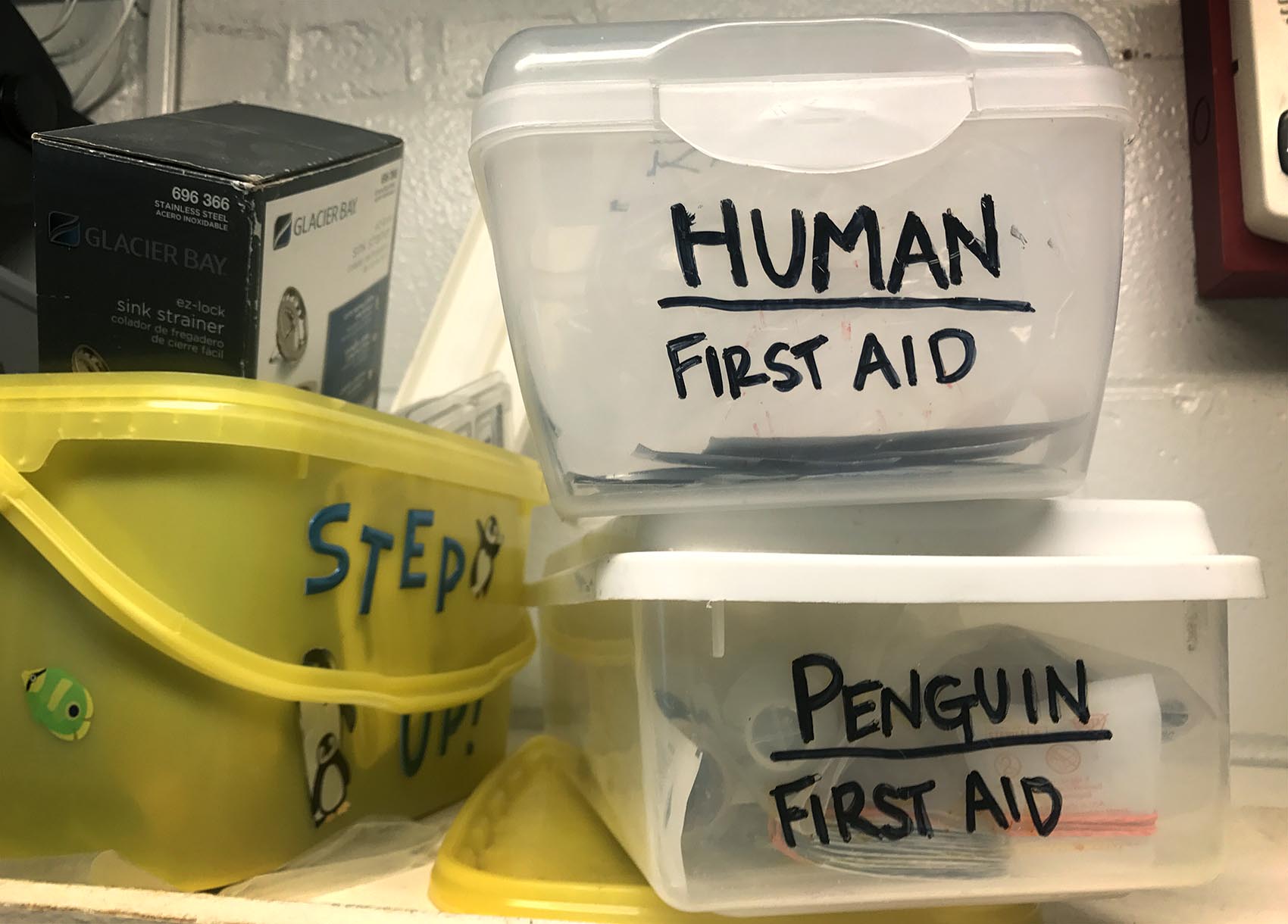Advertisement
From Horseshoe Crabs To Halibut, How One Man Helps Keep 33,000 Aquarium Animals Healthy
Resume
The head veterinarian at the New England Aquarium is responsible for more than 33,000 animals and 855 different species.
Here & Now's Peter O'Dowd spent a morning doing rounds with Charlie Innis, the aquarium's director of animal health.
Interview Highlights
On health emergencies he deals with
"We have really eliminated most of the types of illnesses that [African penguins] would experience in the wild, and so it's interesting now, in captivity, we see some of the more common things that happen to older people, or older dogs and cats. So if the penguins are not being eaten by sharks in the wild or dying from infectious diseases in the wild, eventually something else happens, and so we see older animals here that develop cataracts or diabetes or cancer. It can be challenging but interesting to work with those kinds of cases."

On his expertise with the aquarium's many different species
"They're different in some ways, but if you look across all of the vertebrate species, they're actually quite similar: a fish has a liver, you have a liver, a dog has a liver. So a lot of the organ systems are similar and we really just are taking what we know in other species — domestic species like dogs, cats, horses, cows — and then we apply that information to species that may not be studied that well. When it's time to provide care to an octopus, there's not a course in school about octopus medicine."
"We do fail sometimes. Sometimes we find novel disease conditions or novel infectious agents that have never been reported before, and we're the first to find it, and in that case we just have to try to extrapolate from other similar situations and come up with a plan. Sometimes that plan may work, but other times the plan fails, and that's just part of what the job is like here."
"When it's time to provide care to an octopus, there's not a course in school about octopus medicine."
Charlie Innis
On the deterioration of the oceans
"It's looking a little bit depressing across the board in some capacities. We know that a lot of species are declining in numbers across the world, sea turtles are a good example, the whales are a good example. And we know that the oceans are full of fishing gear and pollution, and that the chemistry of the ocean is changing from climate change, and all of these things are influencing the species that evolved in the oceans for millennia, and just within a few hundred years of the human population boom, we're really damaging a lot of these species. ... Sea turtles, there's seven species, they're all considered endangered at this point, and they're affected by things like being entangled in fishing gear, accidentally being captured by fishing gear, and a lot of their coastal habitat where they lay their eggs has been developed as luxury resorts for humans."

On his role as a conservationist
"All of us here feel like we have a conservation and education job, and that's the reason many of us come to work here. So we're not just taking care of pet animals, but we recognize that we, as animal care providers, can't solve all of those problems, and we recognize that we need attorneys and politicians and conservation biologists to help us in that mission."
On whether animals fare better in the wild versus captivity
"I can't just give a yes or no answer to that. There are animals that live here that live in smaller spaces than they would if they were out in the wild, but many of the animals that live here were born in captivity and would not survive in the wild. We've made choices here. For example, we don't exhibit dolphins here anymore, and that was a conscious choice based on the resources that we felt we could provide to them. There are things that live here that, it's appropriate for them to be here. That's not true, probably, of every zoo and aquarium in the world."

This article was originally published on August 07, 2017.
This segment aired on August 7, 2017.
